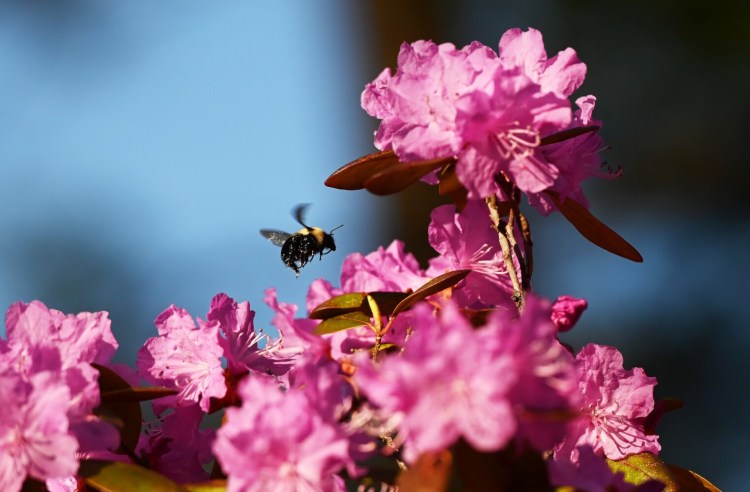If you told the average homeowner you were going to fill their gardens with Ericaceae, they wouldn’t know what you were talking about, but they’d be happy with the garden.
Daniel Robarts, a grower, horticulturist and, he added because it is important, stringer of lights for Gardens Aglow at Coastal Maine Botanical Gardens, discussed the huge family of plants at the Maine Landscape & Nursery Association meeting in Augusta in January.
The Ericaeae family includes roughly 20 genera, 1,900 species and tens of thousands of cultivars, which form the background of many landscapes. Generically called the heath family, Ericaceae includes heathers and other smaller plants as well as large ornamentals such as rhododendron, azalea and mountain laurel.
Robarts is a big fan of rhododendrons, which is good because he is manager of the Giles Rhododendron Garden at the botanical gardens, which also includes azalea and other heath plants. “Rhododendron and azalea plants only blossom for about two weeks a year,” he said, “so they have to look good the rest of the year when they are not in blossom.”
Robarts particularly likes a rhododendron variety he and most other people call Yaks, because the actual name, yakushimanum, is hard to spell and hard to say. Yaks have ball-shaped flowers that can be from pink to yellow along the color spectrum. Once the blooms go by, the fuzzy edges and undersides of the leaves are attractive.
“They don’t suffer that ‘I’m an old rhody’ kind of look that other varieties do,” he said.
Throughout Robarts’ hour-long lecture, while talking about other Ericaceae, he would occasionally yell “Yaks,” meaning that a Yak would probably be better than the plant he was actually discussing.
My wife, Nancy, and I planted two yaks on our property more than a decade ago; even now, both are no more than 4 feet tall. Gorgeous when in bloom, they make a good foliage plant the rest of the year.
Don’t plant your rhododendrons too close to a building, such as a house. To illustrate why that’s a bad idea, Robarts showed the audience photos of rhododendrons that were wrapping around homes, blocking windows, or looming over a home. So while you can prune rhododendrons sparingly from the bottom up, Robarts said, a lot of that work can be avoided if you plant them in the right spot in the first place. Keep them well away from the house, he said, and give them soil on the acidic side and full to part shade.
Robarts also had high praise for Five-Leafed Azalea, Rhododendron quinquefolium, a deciduous species with layered, slow-growing branches that is wonderful when in bloom early in the spring – the colors are white, pink or rose – and at other times of the year, too. Its leaves are accented in red when they emerge in the spring, and they offer attractive fall color. Robarts said he sees Pieris, aka Andromeda, in nurseries but almost never in landscapes, which is too bad. They also are good for making wreaths, he added.
I was pleased that he praised wintergreen, or Gaultheria accumbens, which we planted two years ago in an area of our garden that we are “rewilding.” Robarts said they are hard to establish, but ours are doing well and we have ordered more from Fedco. Wintergreen is evergreen and can have a bronze or purplish color.
He also praised the sourwood tree, Oxydendrum arboreum, a New England native. I helped plant three of them at a friend’s house more than 30 years ago, and up until five years ago I would have called that a mistake. For the past five years, though, they have been gorgeous, producing lily-of-the-valley-like flowers that last from August through frost, and foliage that turns orange-red in the fall. After growing 30 years, they are just 20 feet tall.
One other species Robarts mentioned is Monotropa, which was recently moved to the Ericaceae family. I’d never plant them, but it’s fascinating to know they exist. Native to temperate areas in the northern hemisphere, they are rare, and they do not have chlorophyll, so don’t need sunlight. They act as parasites, feeding on underground fungi.
Now, I wonder, just what do they have in common with rhododendrons, azaleas, blueberries and heather?
Tom Atwell is a freelance writer gardening in Cape Elizabeth. He can be contacted at: tomatwell@me.com.
Send questions/comments to the editors.



Comments are no longer available on this story